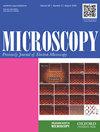Large-scale single-molecule imaging aided by artificial intelligence
IF 1.8
4区 工程技术
引用次数: 5
Abstract
Single-molecule imaging analysis has been applied to study the dynamics and kinetics of molecular behaviors and interactions in living cells. In spite of its high potential as a technique to investigate the molecular mechanisms of cellular phenomena, single-molecule imaging analysis has not been extended to a large scale of molecules in cells due to the low measurement throughput as well as required expertise. To overcome these problems, we have automated the imaging processes by using computer operations, robotics and artificial intelligence (AI). AI is an ideal substitute for expertise to obtain high-quality images for quantitative analysis. Our automated in-cell single-molecule imaging system, AiSIS, could analyze 1600 cells in 1 day, which corresponds to ∼ 100-fold higher efficiency than manual analysis. The large-scale analysis revealed cell-to-cell heterogeneity in the molecular behavior, which had not been recognized in previous studies. An analysis of the receptor behavior and downstream signaling was accomplished within a significantly reduced time frame and revealed the detailed activation scheme of signal transduction, advancing cell biology research. Furthermore, by combining the high-throughput analysis with our previous finding that a receptor changes its behavioral dynamics depending on the presence of a ligand/agonist or inhibitor/antagonist, we show that AiSIS is applicable to comprehensive pharmacological analysis such as drug screening. This AI-aided automation has wide applications for single-molecule analysis.人工智能辅助的大规模单分子成像
单分子成像分析已被应用于研究活细胞中分子行为和相互作用的动力学和动力学。尽管单分子成像分析作为一种研究细胞现象的分子机制的技术具有很高的潜力,但由于测量量低以及所需的专业知识,它尚未扩展到细胞中的大规模分子。为了克服这些问题,我们通过使用计算机操作、机器人和人工智能(AI)实现了成像过程的自动化。人工智能是专业知识的理想替代品,可以获得用于定量分析的高质量图像。我们的自动化细胞内单分子成像系统AiSIS可以在一天内分析1600个细胞,这相当于比手动分析高出约100倍的效率。大规模分析揭示了分子行为的细胞间异质性,这在以前的研究中没有得到承认。受体行为和下游信号传导的分析在显著缩短的时间内完成,并揭示了信号转导的详细激活方案,推进了细胞生物学研究。此外,通过将高通量分析与我们之前的发现相结合,即受体根据配体/激动剂或抑制剂/拮抗剂的存在而改变其行为动力学,我们表明AiSIS适用于药物筛选等综合药理学分析。这种人工智能辅助自动化在单分子分析方面有着广泛的应用。
本文章由计算机程序翻译,如有差异,请以英文原文为准。
求助全文
约1分钟内获得全文
求助全文
来源期刊

Microscopy
工程技术-显微镜技术
自引率
11.10%
发文量
0
审稿时长
>12 weeks
期刊介绍:
Microscopy, previously Journal of Electron Microscopy, promotes research combined with any type of microscopy techniques, applied in life and material sciences. Microscopy is the official journal of the Japanese Society of Microscopy.
 求助内容:
求助内容: 应助结果提醒方式:
应助结果提醒方式:


